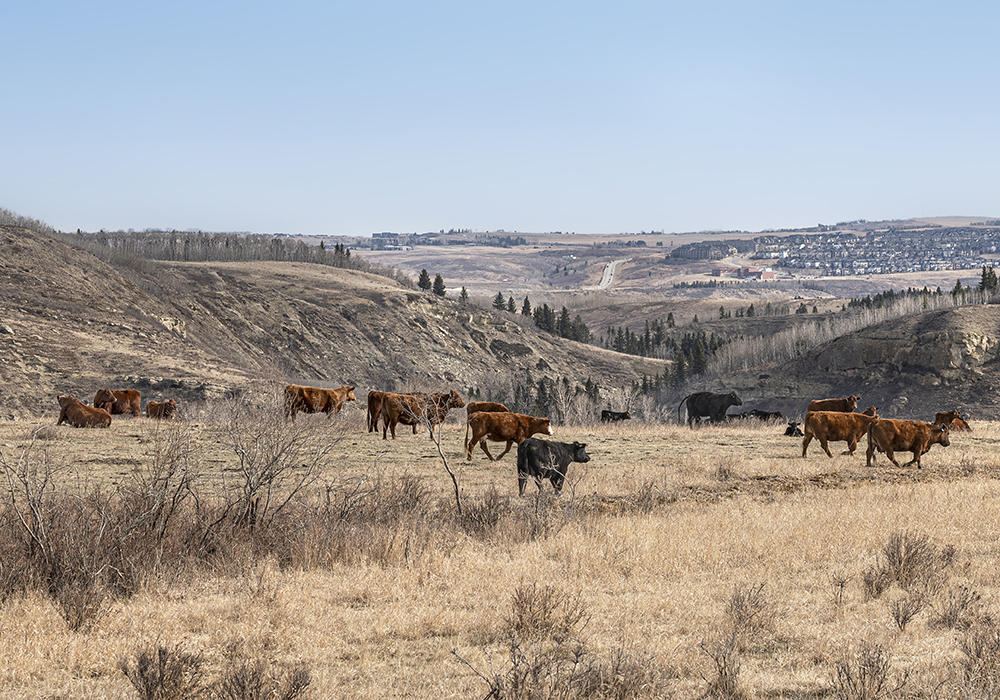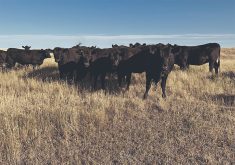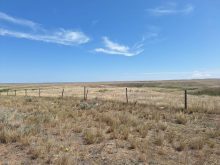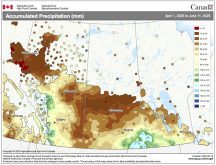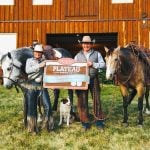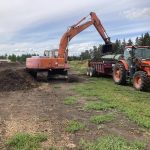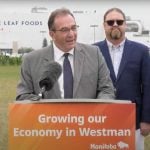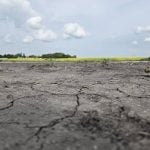Sask. crop insurance doubles low-yield thresholds to allow crops to be used for feed, but farm group says more is needed
The Saskatchewan Stock Growers Association called for an immediate AgriRecovery assessment last week, even as governments moved to make it easier to turn low-yielding crops over for feed.
President Garner Deobald said the steps taken so far, such as potential rent reductions on crown pasture, are helpful but don’t go far enough. Implementing AgriRecovery could free up money to help with purchasing feed and hauling it, he said, and give governments more flexibility to help.
He said the year began well, with good moisture conditions early on, but in June “it went completely sideways.”
Read Also

AI expected to make itself felt in food systems
Artificial intelligence is already transforming the food we eat, how farmers produce it and how it reaches the consumer, experts say
Some places are experiencing multiple years of consecutive drought and what the heat and dry weather haven’t hurt, the grasshoppers have eaten.
Near Lafleche, Sask., Brekke Masse said it is the seventh year of drought on her family’s farm and they aren’t sure how crop insurance will help after that many years of claims.
Several rural municipalities have declared drought disasters to draw government attention.
The SSGA sent the provincial and federal governments a list of ways they could help livestock producers, including greater assistance through the Farm and Ranch Water Infrastructure Program and adjusting the Forage Rainfall Insurance Program coverage to last year’s levels.
Deobald said he received several calls that forage rainfall coverage had dropped this year on the expectation of lower feed prices.
“Feed is as high or higher than it was a year ago,” he said.
Saskatchewan Crop Insurance Corp. last week announced it would double the low-yield appraisal values for cereals and pulses so that farmers could make decisions to graze, bale or silage their poor crops.
For example, the threshold for oats is 10 bushels per acre but that will be doubled to 20 for program participants who want to redirect their crop for livestock.
Agriculture minister David Marit said when the same change was made in 2021 about 345,000 acres of crop became available as feed.
When the appraised yield of affected crops falls below an established threshold, the yield is reduced to zero for the crop insurance claim and that doesn’t affect future claims.
SCIC acting vice-president of operations Lorelei Hulston said there is no deadline to put crops to alternative use but Nov. 15 is the post-harvest claim deadline. The program applies to crop insurance participants anywhere as long as they meet the low-yield threshold.
“If they’re damaged to the point where they’re wanting to use them for a plow-down crop or something, that would be managed based on our status quo, normal low-yield appraisals,” Hulston said. “Even if producers are above that low-yield appraisal threshold, we’ll go out and put an appraisal on if they want to use it for greenfeed.”
She said farmers need to look at the stage of their crops and the risk of ongoing damage and decide.
Hulston added that SCIC is staffing up in the hardest hit areas where they expect farmers might take advantage of this program and appraisals will be needed.
The government had already announced that crown grazing lessees could be eligible for rent reductions if stocking rates have to be cut by 20 percent or more because of poor grazing conditions. AgriStability participants can apply for an interim benefit of up to 50 percent of their estimated final payment.
Deobald said all the measures can add up. Livestock organizations were to meet July 17 with Marit to talk about the situation.
Steve Primrose, chair of the South Saskatchewan River Irrigation District and a feedlot operator, said irrigated growers in the district have previously organized straw drops to help livestock producers and are likely to do so again.
“We should be able to help a few ranchers,” he said.
Deobald said a collective effort could help everyone through another dry year.
Marit’s office said the government continues to monitor the situation and noted farmers and ranchers could take advantage of improvements to the AgriStability compensation rate to 80 percent, record high crop insurance coverage of an average $446 per acre and the forage programs that paid out $1.44 billion last year.
The FRWIP program funds 50 percent of eligible costs to a maximum rebate of $75,000 over the life of the program. The SSGA would like that to be 75 percent, as it was in 2021, with a gross farm income eligibility of $10,000. Other suggested changes included funding offsite watering systems without requiring dugout expansion or riparian protection, including pumping and hauling as eligible expenses, providing technical support for projects, expediting regulatory approval, paying the government portion directly to contractors and providing funds for temporary fencing to enable grazing on unharvestable crops.
SSGA asked Ottawa to move quickly on implementing livestock tax deferrals for producers who have to downsize breeding herds.
For cash flow assistance, the organization asked for tax-free AgriInvest withdrawals, long-term low-interest loans and extended payments from federal programs such as the Advanced Payments Program and Farm Credit Canada loans.




